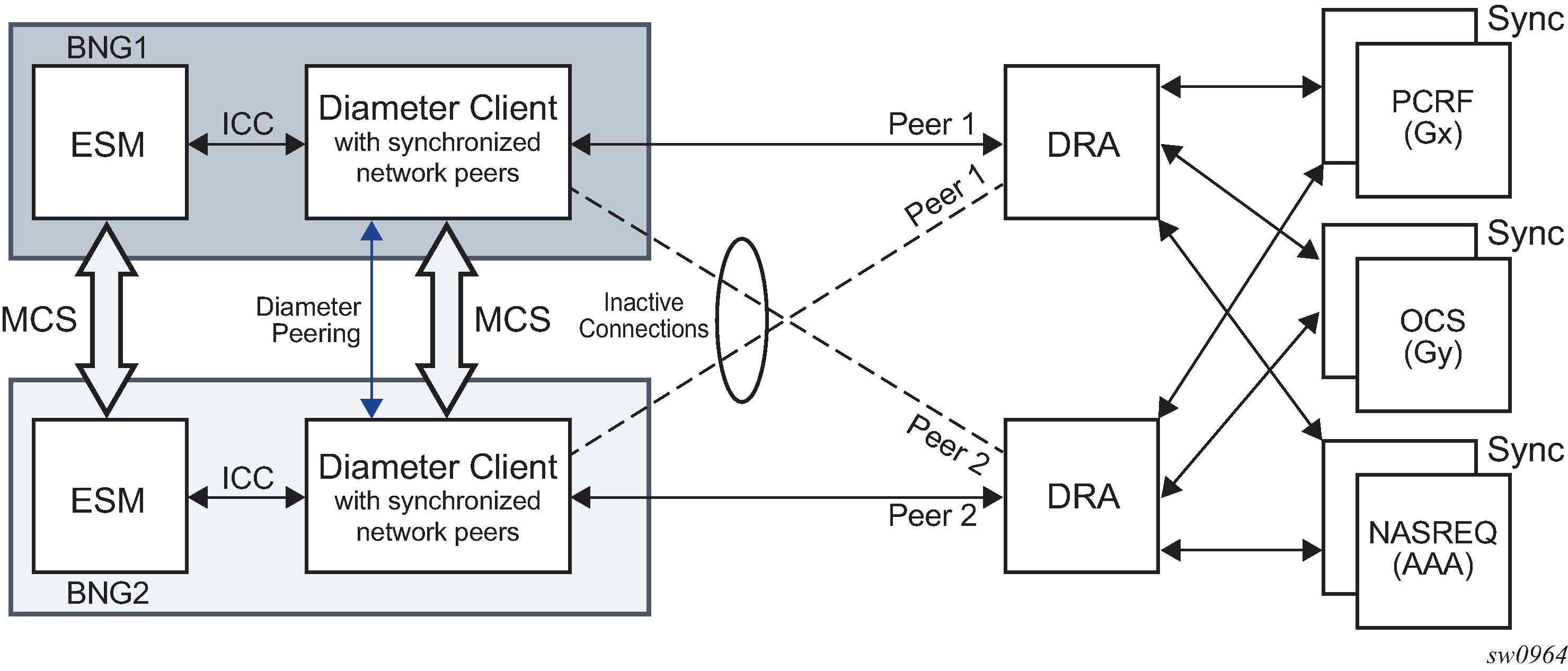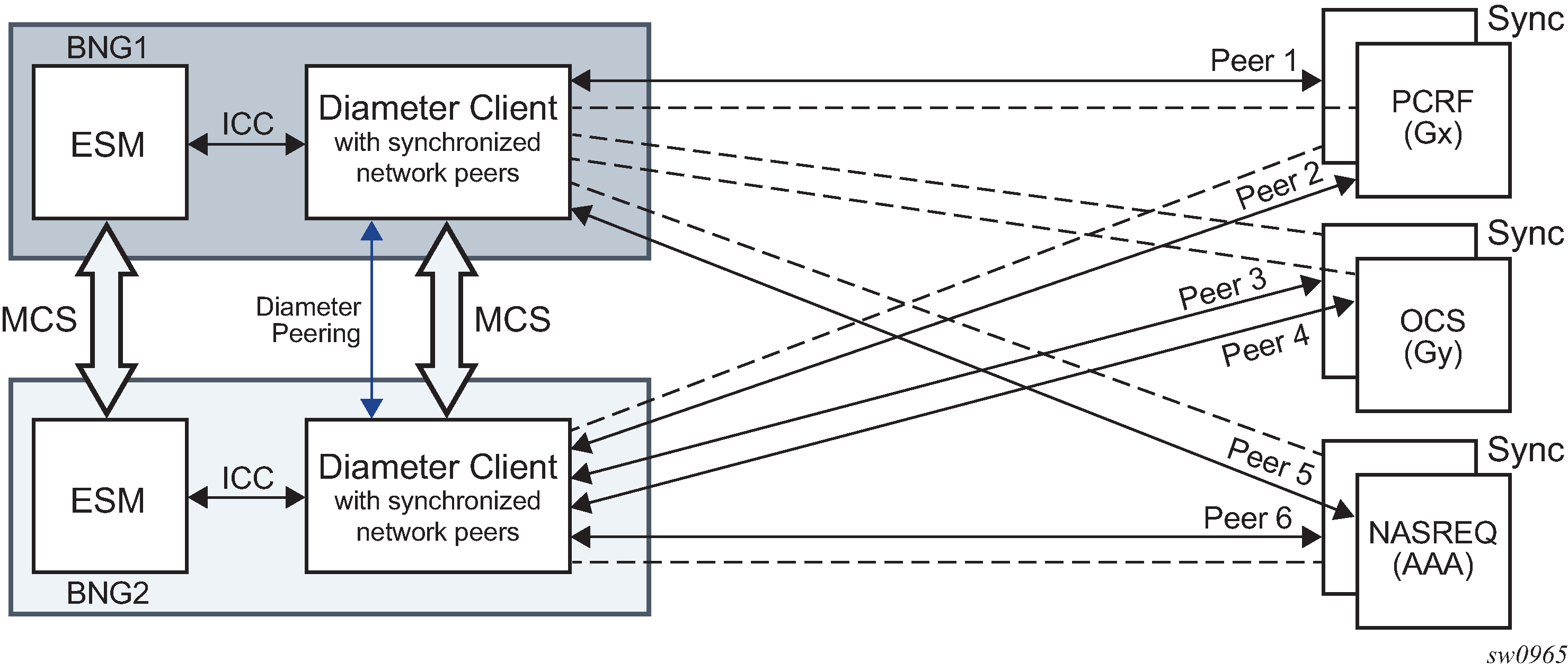Diameter multi-chassis redundancy offers a protection mechanism against network failures where the Diameter application sessions are synchronized and preserved after the chassis switchover.
Two redundant Diameter SR nodes appear as a single Diameter entity, while maintaining a single peering connection with each network peer (in other words, only one BNG in the pair forms a peering connection with a Diameter peer on the network side). With this configuration, each network node (agents and servers) maintains a single, unambiguous path toward the pair of redundant SR nodes. The SR node selected to maintain this peering connection is chosen through the Multi-Chassis Synchronization (MCS) protocol that runs between the two nodes. The decision about which node opens the peering connection is made on a per-peer basis, which means that the networks peering connections can be distributed over the pair of redundant SR nodes.
In a multi-chassis (or a dual-homed ) environment, an ESM subscriber is instantiated in both SR nodes. However, traffic for the subscriber is steered (in upstream and downstream direction) through the SR node with the SRRP in the Active state. Because the Diameter Base in the SR OS is not aware of the ESM subscribers and their (SRRP) states, an inter-peering Diameter connection is mandatory between the two redundant SR nodes. This peering connection is required to relay Diameter messages between the two redundant SR nodes if the SRRP is active on one node while the Diameter peering connection is open on the other node.
The concept of Diameter dual-homing is shown in Figure: Multi-chassis redundancy in DRA environment and Figure: Multi-chassis redundancy with directly connected servers.

